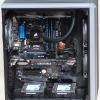-
Posts
555 -
Joined
-
Last visited
Awards
This user doesn't have any awards
Profile Information
-
Gender
Male
-
Interests
Music, paying drums, everything about science, playing squash and tennis, gaming and overclocking
-
Occupation
Industrial Engineer
System
-
CPU
AMD FX8320
-
Motherboard
ASUS Sabertooth 990FX
-
RAM
16GB 1866MHz DDR3 Kingston HyperX Fury
-
GPU
XFX R9 380X
-
Case
Sharkoon something
-
Storage
240GB Kingston SSD + 2TB Toshiba HDD
-
PSU
Corsair VS650
-
Cooling
Coolermaster Hyper 212 EVO Dual fans
-
Operating System
Windows 7 64bit
Recent Profile Visitors
1,631 profile views
Jonathan Lemmens's Achievements
-
The Bitfenix Spectre Pro RGB series of fans are said to be "ASUS Aura Sync Ready" and are being sold as just a fan or a fan with controller combo. Do I need to buy the controller in order to get it working with Aura sync? And if so, can I connect multiple fans to one controller?
-
make sure you only short the pwr_button pins, if you don't know which pins they are, try all of them one at a time. Did you change anything on your system after which it wouldn't start anymore?
-
it looks like a proprietary mobo, like from dell or HP. You may be able to find troubleshooting info on their website. luckily there are still people in this world willing to help others, even if it takes a little effort
-
Something to be concerned about?
Jonathan Lemmens replied to Jonathan Lemmens's topic in Graphics Cards
It may not be obvious in the photo, but it's clearly not corrosion. It is the same blue/red-ish color you might see on a chromed exhaust pipe on a motorcycle. -
So I took my R9 380X out for it's annual cleaning and TIM-refresh, and I was shocked to notice this: I have only seen this kind of discoloration on metals that have been heated to temps well above 150C, I also don't see any evidence of insane heat on the plastic shroud, the PCB or any components. The discoloration on the heatsink is more obvious IRL than on the photo. This is the first time I've removed the GPU since I bought it about a year ago, I tried OCing when I got it, but headroom was limited so I didn't bother and ran it at stock ever since. I frequently monitored temps and as far as I remember the GPU never exceeded 70-75C, airflow in the case is also plentiful. I often play Factorio, a 2D game, it requires lots of VRAM but not much GPU power. The VRAM chips also don't have any heatsinks on them, could it be that the VRAM got really hot but I (and the fans) didn't notice it because the card only monitors GPU core temps? Could this be a concern in the future?
-
SuperMicro X7DBN server
Jonathan Lemmens replied to thrasher_565's topic in CPUs, Motherboards, and Memory
The 'server gaming pc' Linus made was likely a similar model to what you're looking at. I only realised now that it's $160 Canadian, so that's actually a pretty good deal I guess, 32GB DDR2 is still worth something. But if all you do is gaming, you're willing to buy used and maybe spend a little more, a Sandybridge (maybe Haswell) CPU + mobo + 8GB RAM is a much better choice for that price range. Purely from a performance and 'compatibility' standpoint I would say: don't buy old server parts for gaming. But if building the PC is as much a hobby for you as gaming on it or your budget is reeeeeeally tight, I'd say: go for it! I'm not going to recommend one or the other though. You probably can't find a full 'consumer grade" PC (ex GPU) of similar performance to this server for the same money or less. Should you buy a proper PC in a year or two, this server is still excellent to use as a NAS or game/media/download-server (because of the 32GB). Just bear in mind, as Linus pointed out in the video, that the amount of money you save could be made up for in the amount of hassle and headaches you have to go through to get it working as a gaming rig (I hope you don't have to saw off part of the GPU ). Good luck! -
I like Realbench https://rog.asus.com/articles/news/realbench-v2-43-new-version-available-now/
- 32 replies
-
- silicon lottery
- ryzen overlocking
-
(and 2 more)
Tagged with:
-
I thought stress tests are to determine stability, benchmarks are to determine performance? Most programs mentioned here do both
-
To add to anything mentioned above I would add your favorite games, especially if they are demanding ones. Also: Benchmarks are used to determine PC performance. 'Bench marks' are left by people who didn't wipe their ass properly.
-
7700k delid with EK Monoblock?
Jonathan Lemmens replied to NetKatalyzt's topic in CPUs, Motherboards, and Memory
When you delid you should always put the heatspreader back on the die with preferably liquid metal in between. That way there is no height difference. The water temperature in a cooling loop is pretty uniform, with negligible difference in temp between incoming and outgoing water in the radiator. So placement shouldn't matter much. AIO manufacturers usually specify a maximum fluid temperature, I think its around 60C. Edit: but you don't have an AIO I guess? The only component in a custom loop that is limited in its operation by temperature would be the pump, check the specs on that for more info. -
6600k with VEGA 64 / 1080 Ti / Volta (bottleneck?)
Jonathan Lemmens replied to olesien's topic in Graphics Cards
If power consumption means nothing to you, Freesync is worth it imo. On the other hand Vega will not be as good as the 1080 Ti. -
6600k with VEGA 64 / 1080 Ti / Volta (bottleneck?)
Jonathan Lemmens replied to olesien's topic in Graphics Cards
Also what the price in Sweden is going to be? And benchmarks from independent reviewers? -
6600k with VEGA 64 / 1080 Ti / Volta (bottleneck?)
Jonathan Lemmens replied to olesien's topic in Graphics Cards
RX Vega is just around the corner, so you might as well wait for benchmarks and pricing. -
No, Cinebench certainly has a more substantial continuous load on the CPU, but some games may actually peak higher than a synthetic benchmark. The guide you followed is a pretty thorough one. In the video JJ skipped over the VRM frequency and VRM spread spectrum settings, increasing those could help with stability at the cost of higher VRM temps, which shouldn't be an issue on the Asus Prime boards.
- 32 replies
-
- silicon lottery
- ryzen overlocking
-
(and 2 more)
Tagged with:
-
What should I buy from Best buy?
Jonathan Lemmens replied to Creed1's topic in New Builds and Planning
I don't know what best buy sells, but your PC looks pretty well balanced. Maybe you could buy an extra fan or something with just the gift card. I would same the money for a future upgrade.









.png)

